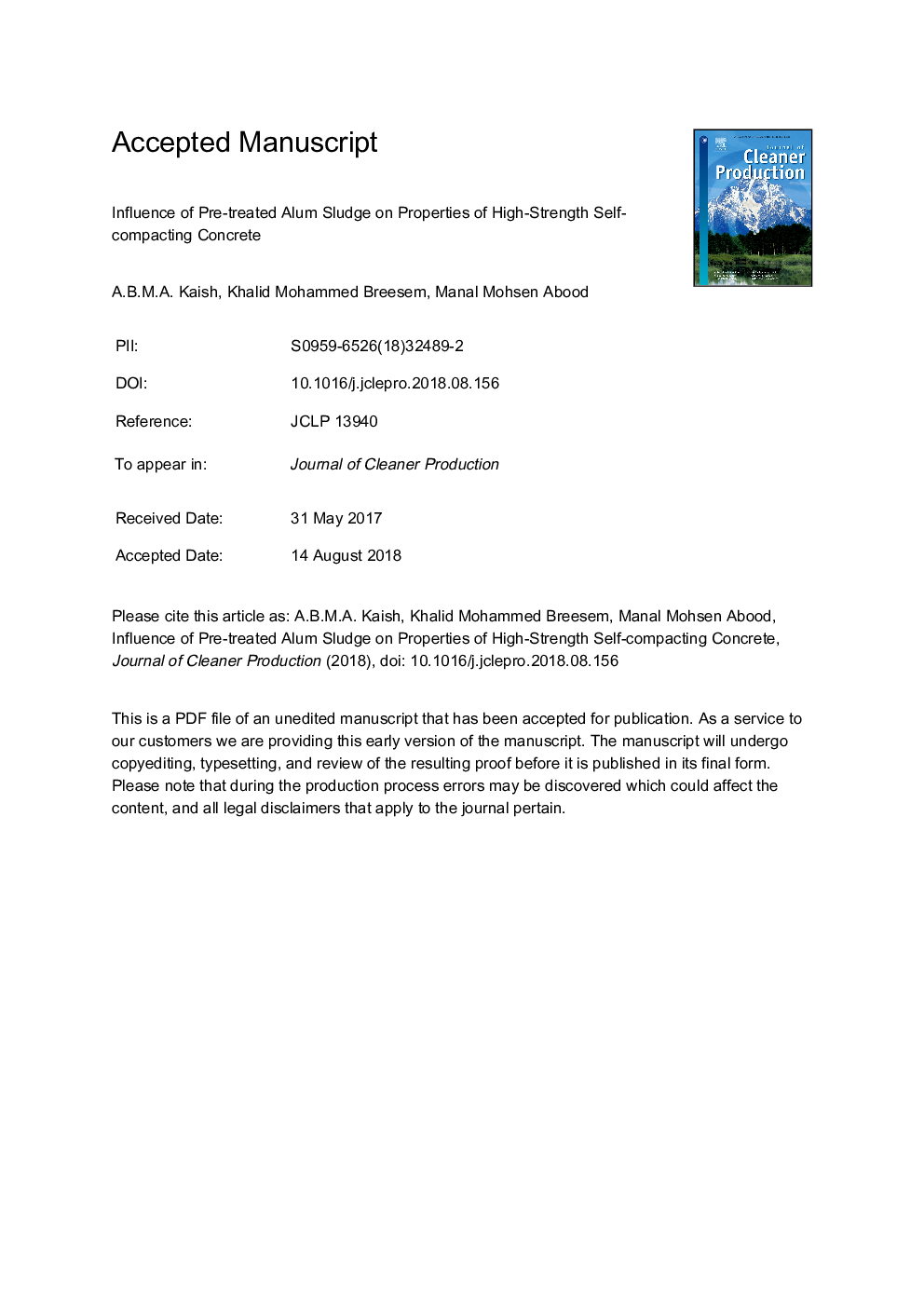| Article ID | Journal | Published Year | Pages | File Type |
|---|---|---|---|---|
| 10136434 | Journal of Cleaner Production | 2018 | 39 Pages |
Abstract
The disposal of alum sludge (AS) produced from drinking water treatment plants is gradually becoming a threat to the environment. The conventional disposal by landfill is not feasible because AS is considered as hazardous waste. By contrast, treated alum sludge (TAS) contains useful chemical compounds (silicon dioxide and aluminium trioxide which are the main constituents of cement). This study explored the influence of TAS on the production of high-strength self-compacting concrete (HSSCC) made up of 5%, 10%, 15%, 20% and 25% cement replacement. The experimental work was divided into 15 mixes as well as three control mixes with three different water/powder (w/p) ratios (0.36, 0.38 and 0.4). The fresh properties of self-compacting concrete (SCC) were determined via the slump flow, V-funnel, V-funnel at T5 min and L-box tests to meet the flowability requirements. The strength and durability properties of SCC were also tested at different specimen ages. In addition, the effects of elevated temperature on TAS-incorporated concrete were observed at different temperatures for 3â¯h. Experimental results revealed the encouraging effects of TAS on the fresh, hardened and durability properties of HSSCC with maximum 15% of the cement component partially replaced with TAS. Meanwhile, losses of mass and strength were observed to be higher in the TAS-incorporated SCC than in the control concrete.
Related Topics
Physical Sciences and Engineering
Energy
Renewable Energy, Sustainability and the Environment
Authors
A.B.M.A. Kaish, Khalid Mohammed Breesem, Manal Mohsen Abood,
